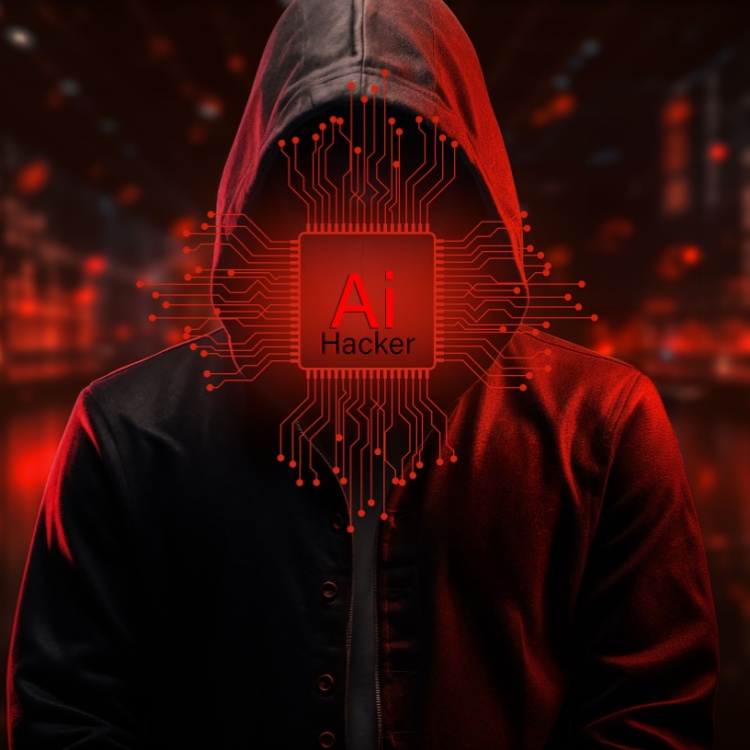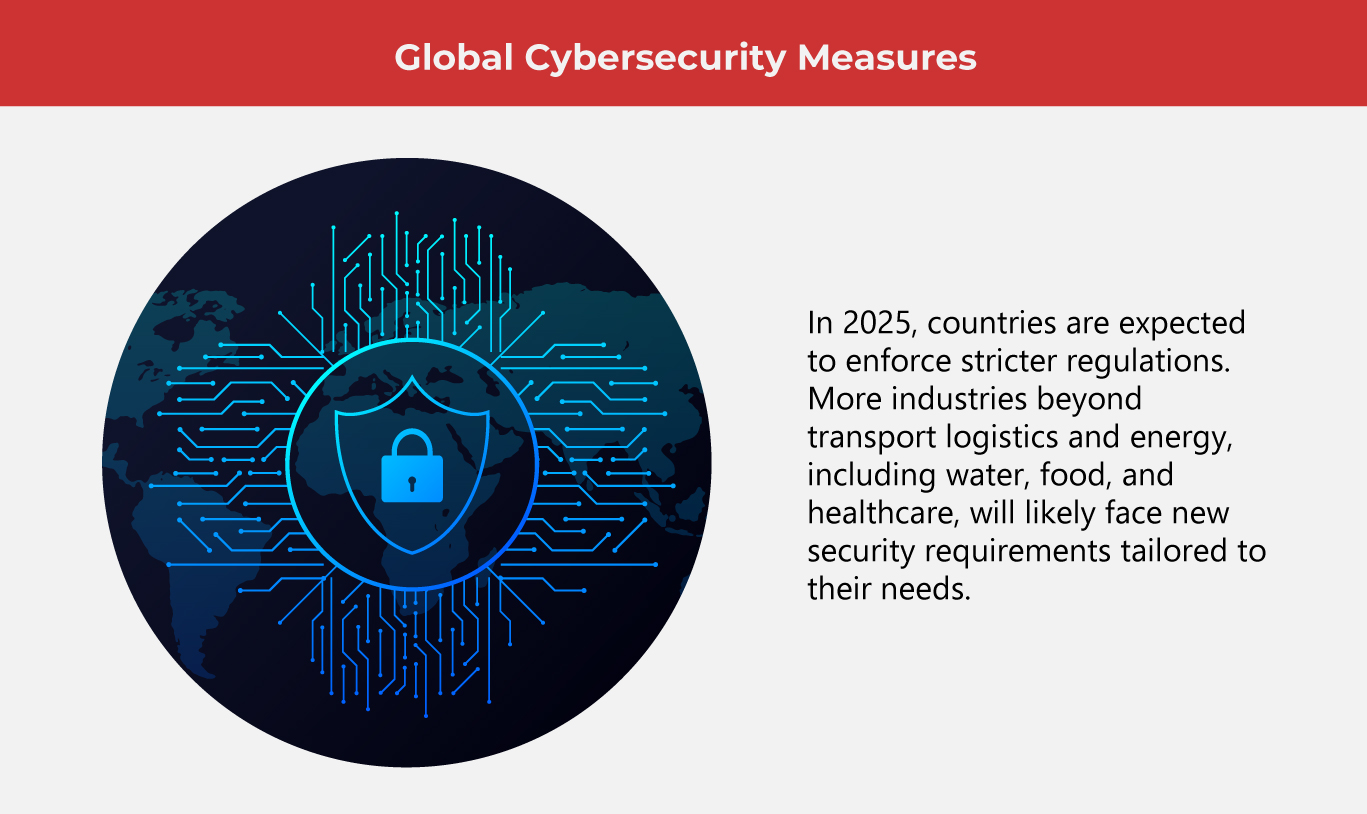What Does Cybersecurity Look Like in 2025?

The cybersecurity landscape in 2024 brought challenges and advancements, from managing high-profile breaches to refining risk strategies. These lessons will influence how industries address threats in 2025 and beyond. While the future remains unpredictable, organizations can make informed decisions to enhance security.The cybersecurity landscape in 2024 brought challenges and advancements, from managing high-profile breaches to refining risk strategies. These lessons will influence how industries address threats in 2025 and beyond. While the future remains unpredictable, organizations can make informed decisions to enhance security.
Top 10 cybersecurity trends & predictions for 2025
Key trends will shape cybersecurity in the coming year, and businesses aiming to improve operational efficiency must adapt proactively.
-
Continuous security updates
Organizations are rethinking their security update and patching methods. Concerns about vulnerabilities in operational technology (OT) have exposed weaknesses in older update processes.
Reliability testing is now a priority, with updates being tested in safe, low-risk environments to avoid disrupting important operations. Tools that allow more control and transparency are becoming popular, helping organizations manage updated risks while staying compliant. Additionally, ring-based deployment models are being considered to reduce risk by starting with less critical systems before moving to essential infrastructure.
-
Detecting risks in supply chain management
In response to high-profile supply chain cyberattacks, organizations are prioritizing systems development to improve security across their networks. They focus on device security by ensuring third-party vendors follow secure practices and meet standards such as International Society of Automation (ISA) and International Electrotechnical Commission (IEC) certifications.
The rise of interconnected business systems has created a perfect environment for supply chain attacks. To counter these, organizations are conducting security audits, adopting zero-trust principles, and using threat intelligence to stay ahead.
-
Preparing for AI-driven threats
Artificial intelligence is transforming industries, including cybercrime. In 2025, attackers will leverage AI for sophisticated phishing, advanced malware, and faster vulnerability detection. These AI-driven attacks will overwhelm cybersecurity defenses, making manual methods obsolete.
A notable threat is using AI to create deepfake audio and video to bypass identity systems or spread misinformation. Now, organizations must implement system integration tools that detect threats in real-time, train employees to recognize AI-crafted phishing, and collaborate with others to share intelligence on emerging AI-based risks.
-
Safeguarding connectivity
As digital transformation grows, more IP-connected devices are being used, which increases the risk for cybersecurity. Industrial solutions like the Internet of Things (IoT) add sensors and devices to processes, often connected to cloud-based systems, which require updating security checks.
The growing number of connected devices amplifies the challenge of securing systems.
As organizations adopt more cloud technology, security measures need to catch up. It's crucial to have strong security frameworks in place to protect remote and hybrid work environments from potential threats.
-
Being ready for ransomware attacks
Ransomware remains the dominant cyber threat in the industrial market, responsible for 80% of attacks where the perpetrator is identified. Critical infrastructure sectors are adapting security measures to better protect operational technology systems. Many organizations now ensure data is stored across multiple copies, different media, and offsite locations.
Meanwhile, regular testing solutions verify backup integrity and improve disaster recovery readiness. Simulated cyberattacks help teams prepare for rapid response. With many ransomware variants and AI-driven threats increasing, stronger detection tools are crucial.
-
Protecting critical infrastructure
In 2024, cyberattacks on essential systems surged, targeting everything from power grids to water supplies. This threat is expected to intensify in 2025 as adversaries and hackers seek to destabilize industries with minimal effort. Outdated infrastructure and weak security protocols heighten these risks, especially as technologies become more interconnected.
Experts stress that cyber threats jeopardize not only safety but also economic value, making security a priority. Strengthening defenses through government collaboration, network segmentation, and real-time monitoring is crucial to protect vital industries and national stability.
-
Streamlining cybersecurity functions
Industries are now using risk-based cybersecurity assessments instead of just checking for compliance. Risk assessment measures like Cyber Process Hazard Analysis (CyberPHA) and CyberBowtie help companies understand real dangers that could affect operations, the environment, or safety. Test and system development play a key role in improving these strategies. Businesses also use real-time and past data to create better risk models, giving them a clearer picture of potential threats. This shift helps organizations manage cyber risks and protect their critical systems.
-
Nurturing and bringing in top cybersecurity talent
Cybersecurity professionals face immense stress, with many at risk of burnout within a year. The high-pressure environment and accountability for breaches contribute to this crisis, worsening the industry’s talent shortage.
For manufacturing industries to promote excellence, organizations must emphasize that cybersecurity is complex and requires collective responsibility. Supporting security teams through balanced workloads, recognition, and investment in advanced security tools enhances effectiveness. Additionally, modernizing certifications ensures professionals stay updated with evolving threats, fostering a resilient cybersecurity workforce that drives operational success.
-
Vigilance against insider risks
Hostile actors increasingly target businesses and essential service providers to steal valuable data or disrupt operations. To prevent this, companies must strengthen their hiring practices and continuously monitor for internal security risks. Businesses should adopt better screening methods and insider risk programs to address evolving threats. By refining process qualification and security protocols, organizations can reduce vulnerabilities and safeguard critical systems from internal and external cyber risks.
-
Navigating geopolitical tensions
Rising global tensions are fueling cyber conflicts, with politically motivated hackers and state-sponsored groups launching attacks worldwide. Governments are increasingly concerned about these threats.
The UK has warned about Russia’s cyber capabilities targeting British companies, as reported by the BBC. Meanwhile, Reuters states that US Cyber Command has cautioned about China’s potential to disrupt essential US systems if hostilities arise. These developments highlight the growing risks to organizations, as cyber warfare becomes a key tactic in geopolitical struggles, threatening national security and economic stability.
 Cybersecurity will require both prevention and quick responses in the years ahead. With growing threats like ransomware and AI-driven attacks, organizations must stay alert, invest in security, and prioritize protections as technology advances and risks increase.
Cybersecurity will require both prevention and quick responses in the years ahead. With growing threats like ransomware and AI-driven attacks, organizations must stay alert, invest in security, and prioritize protections as technology advances and risks increase.
As one of the Top 20 EMS companies in the world, IMI has over 40 years of experience in providing electronics manufacturing and technology solutions.
We are ready to support your business on a global scale.
Our proven technical expertise, worldwide reach, and vast experience in high-growth and emerging markets make us the ideal global manufacturing solutions partner.
Let's work together to build our future today.
Other Blog




